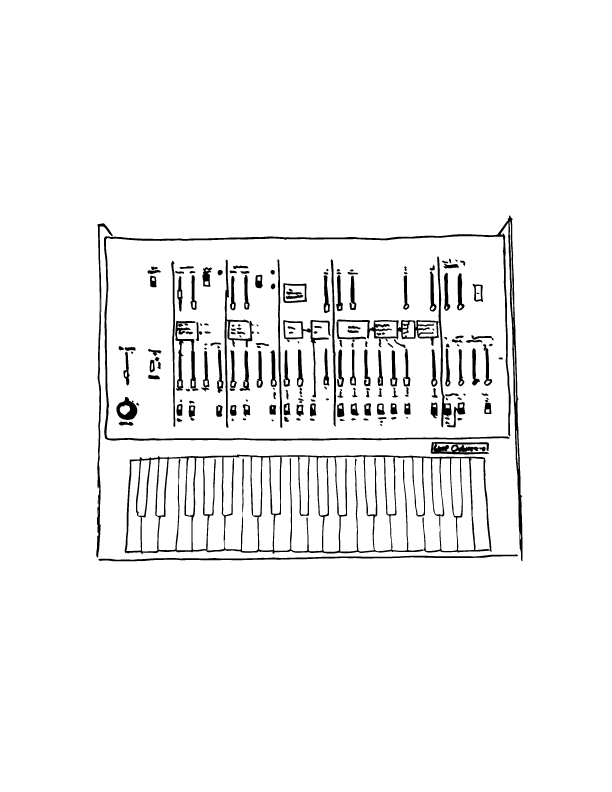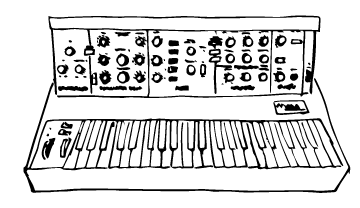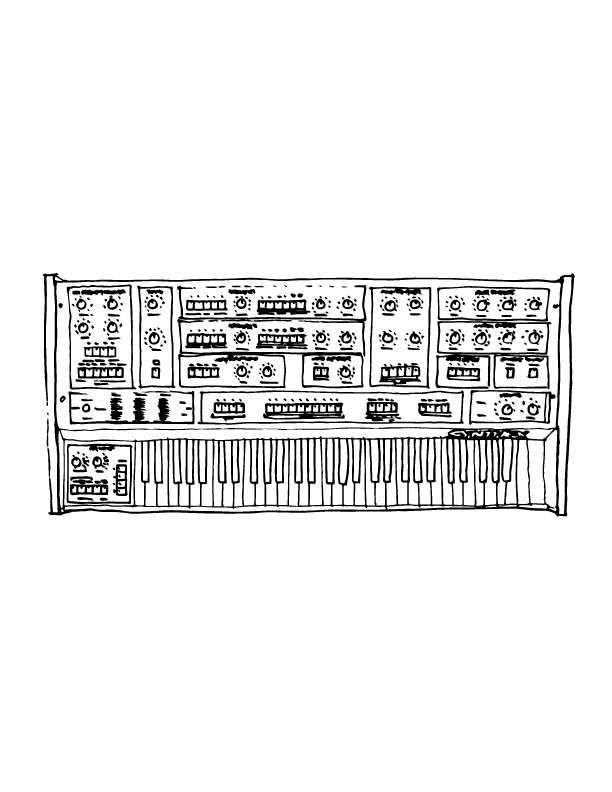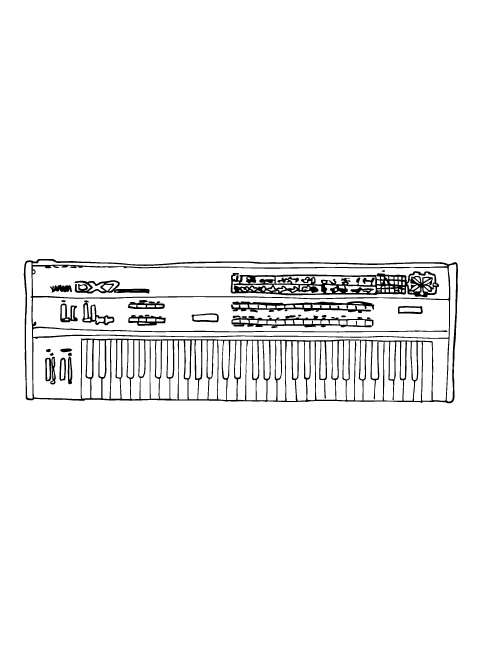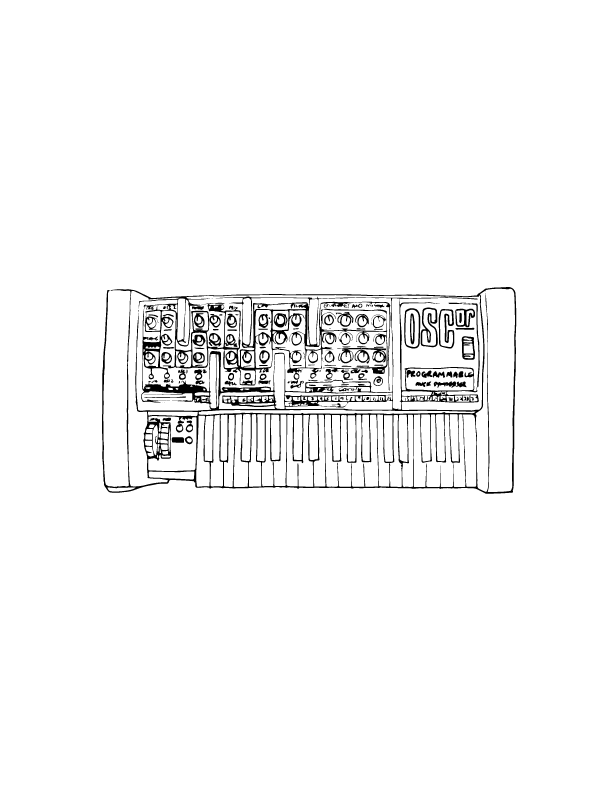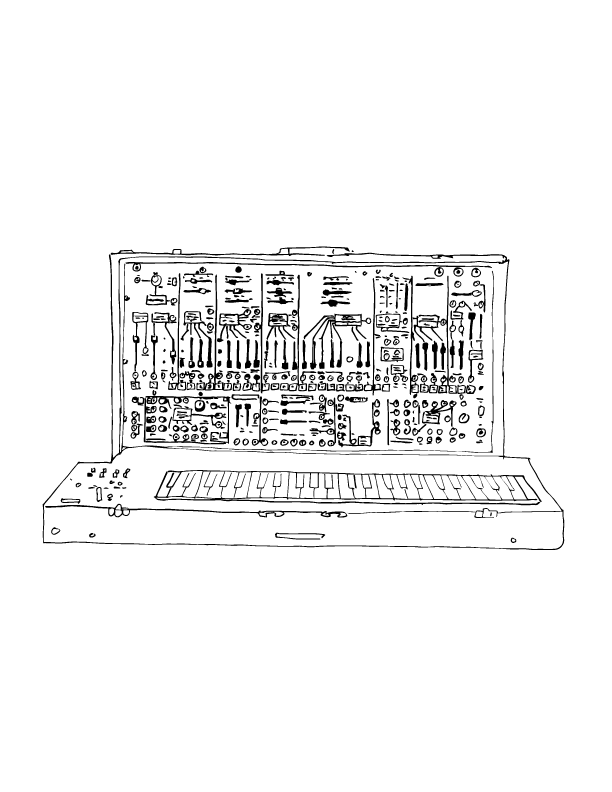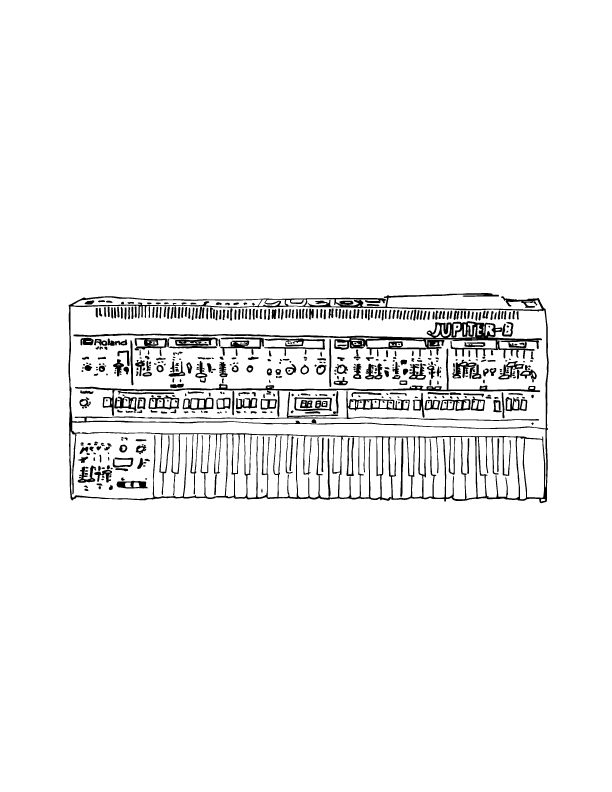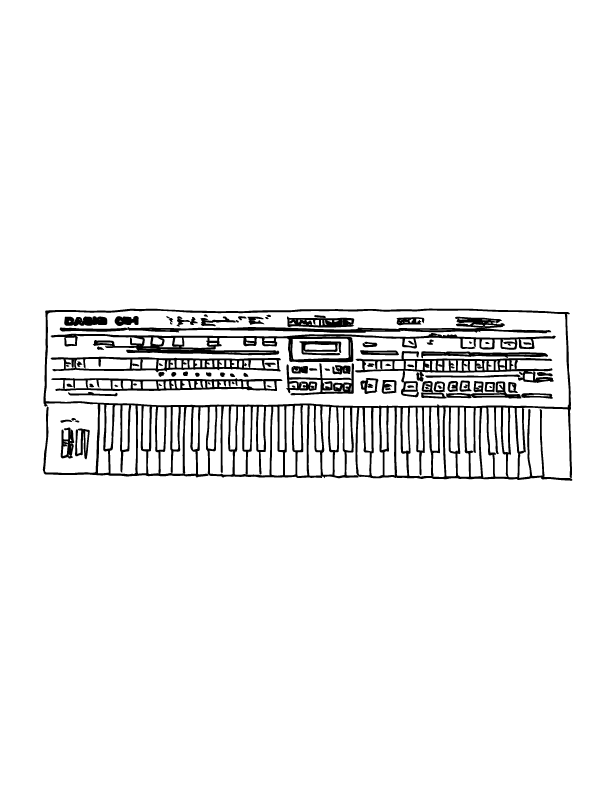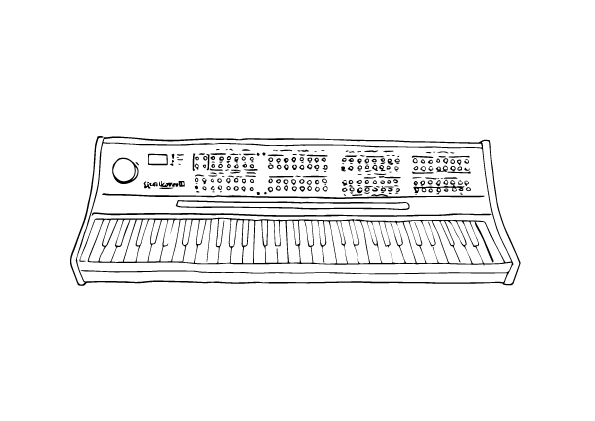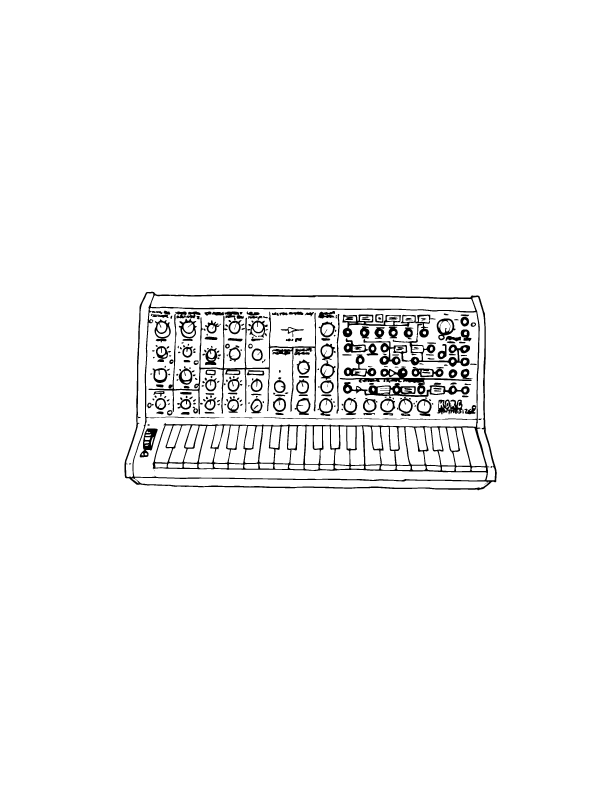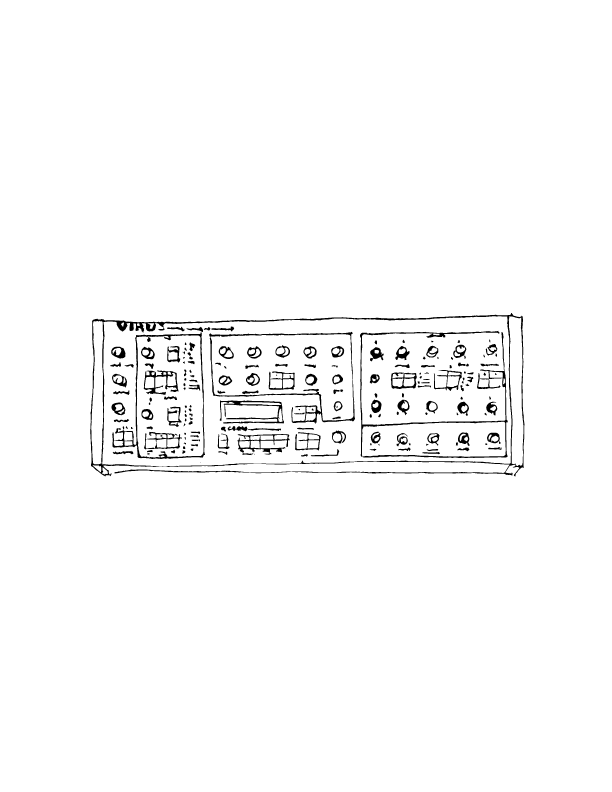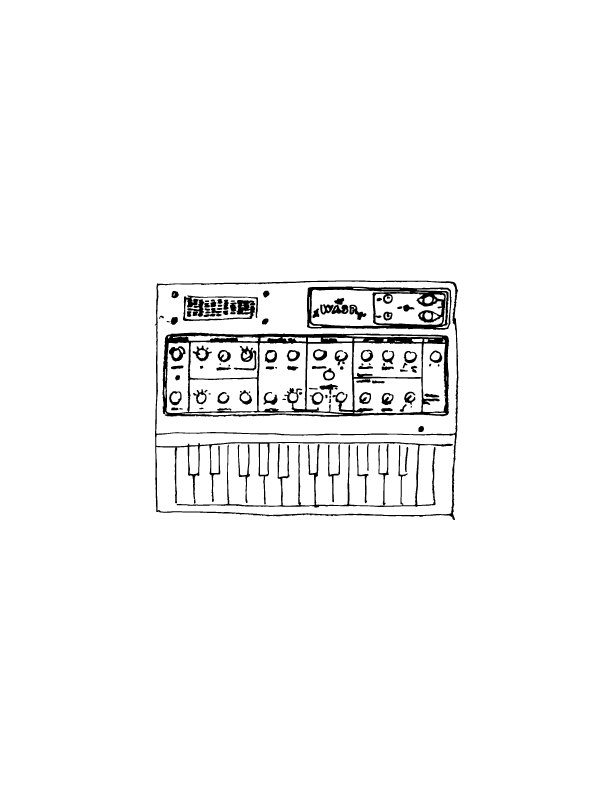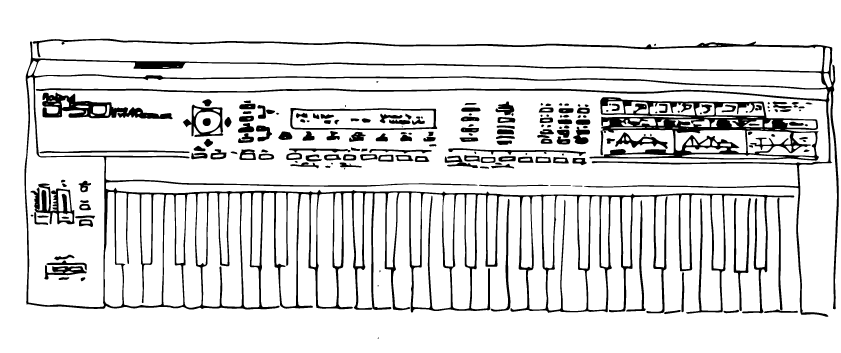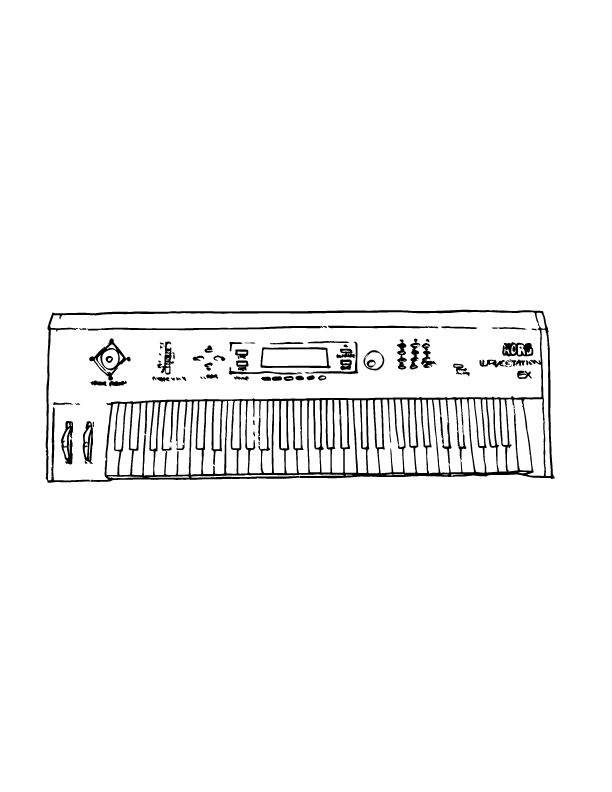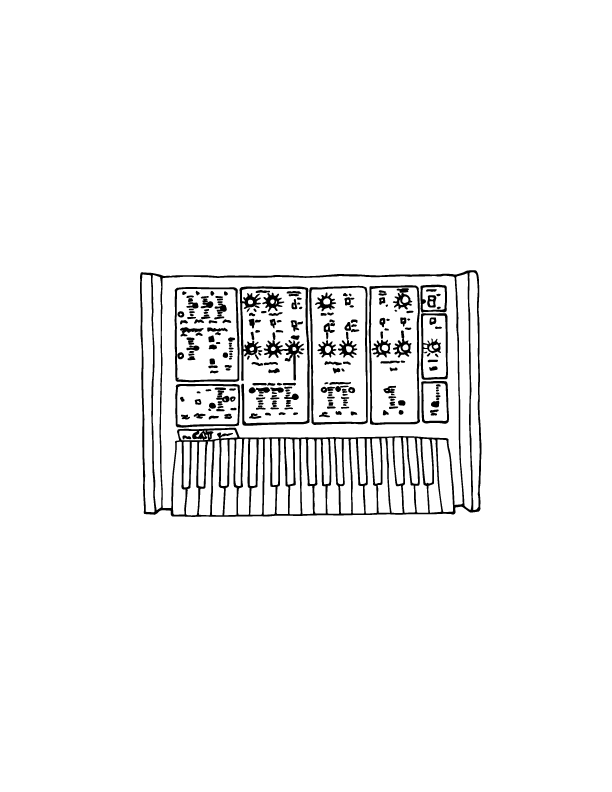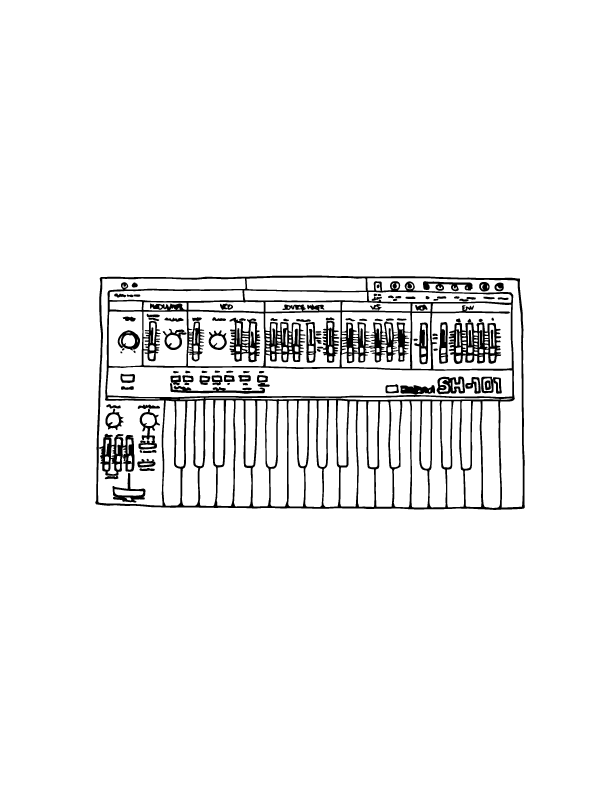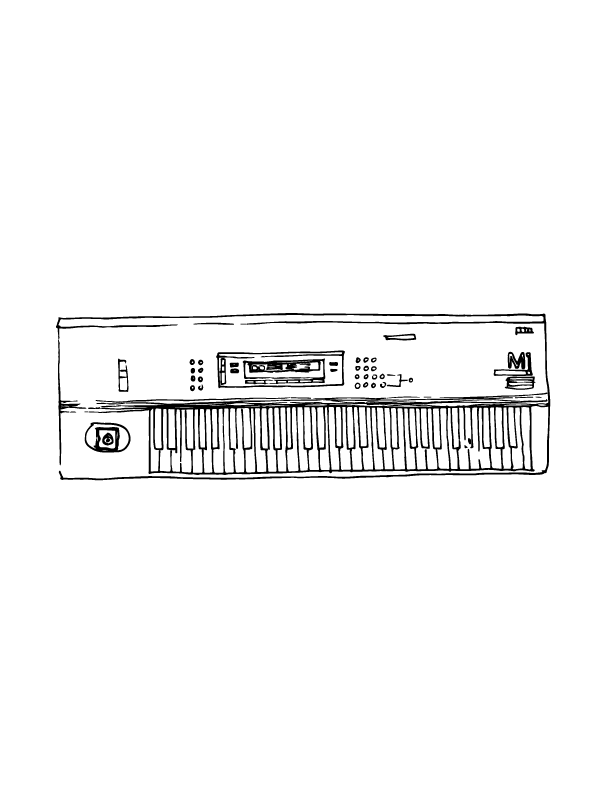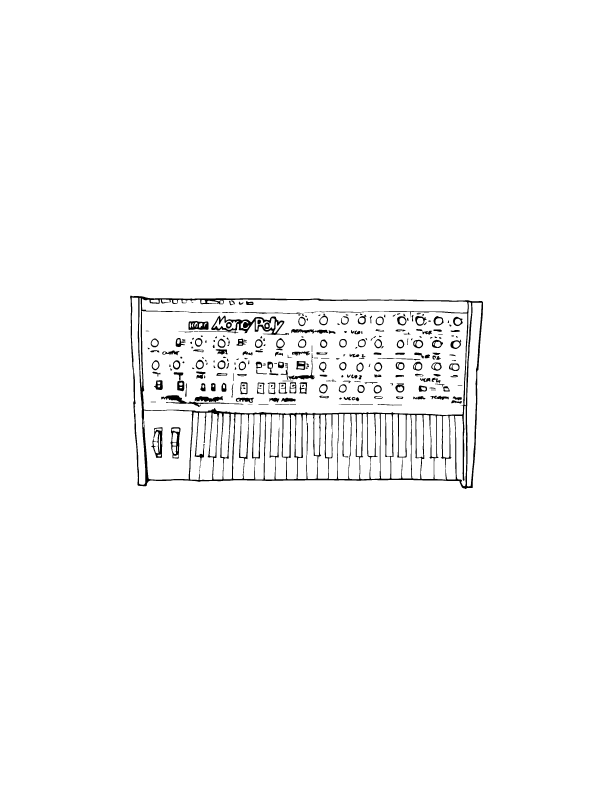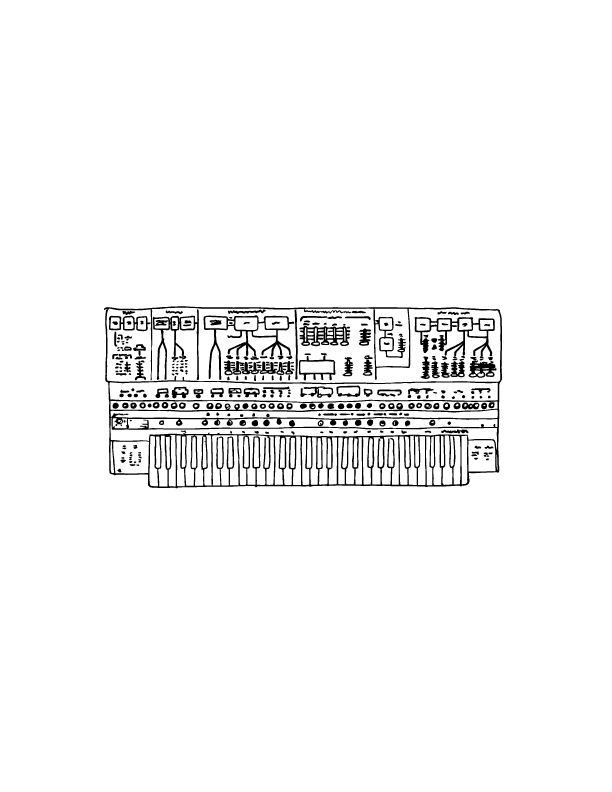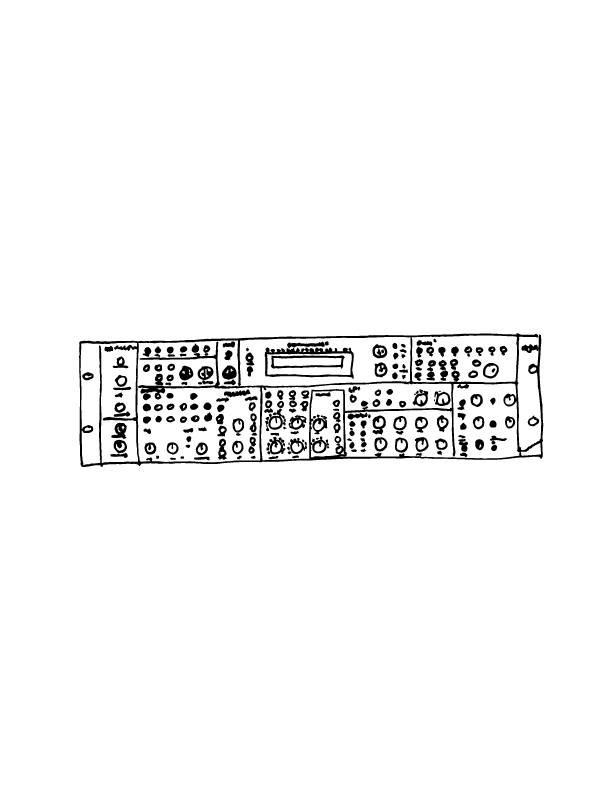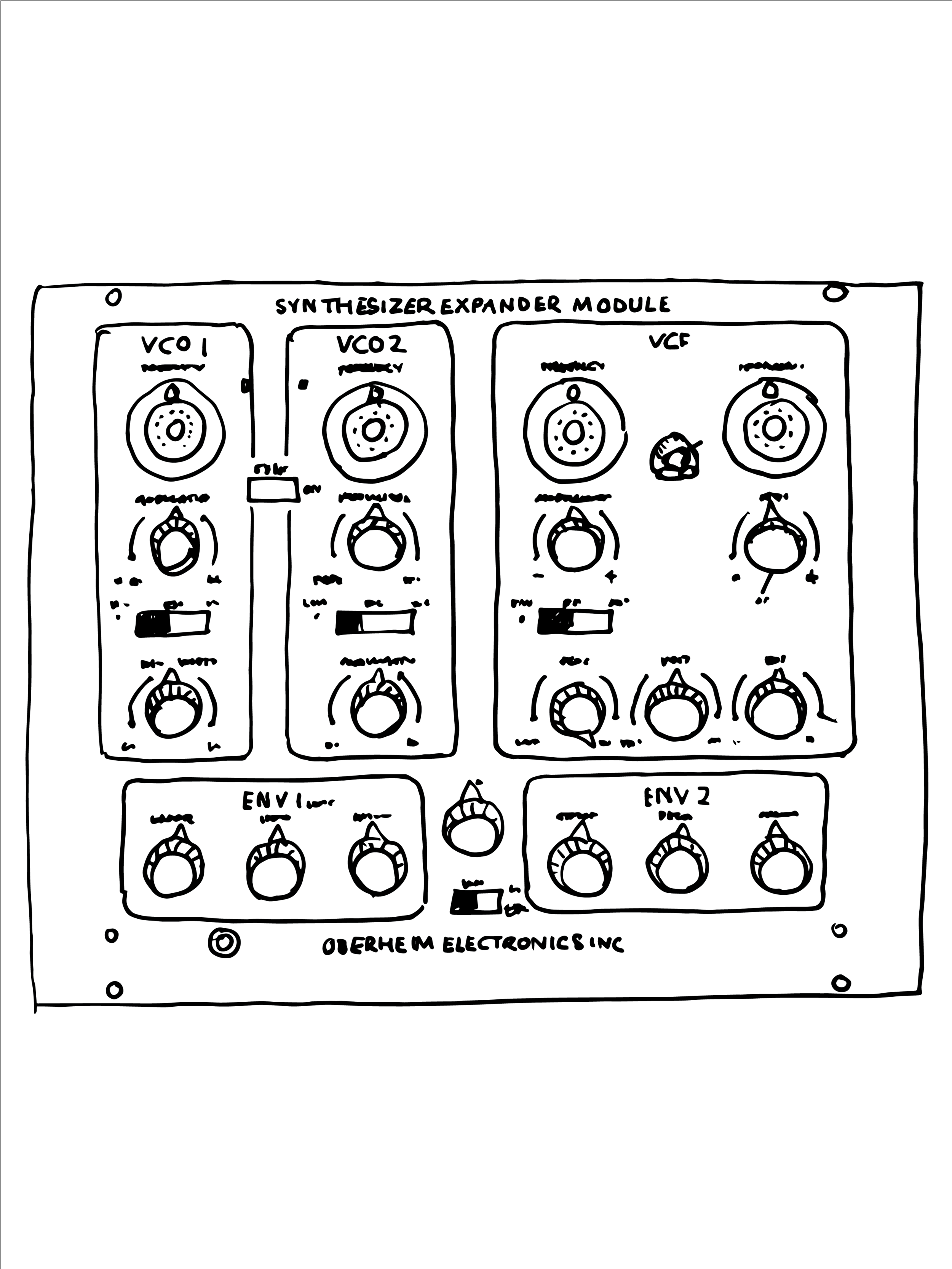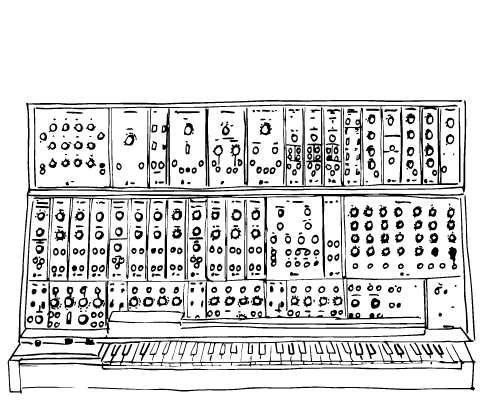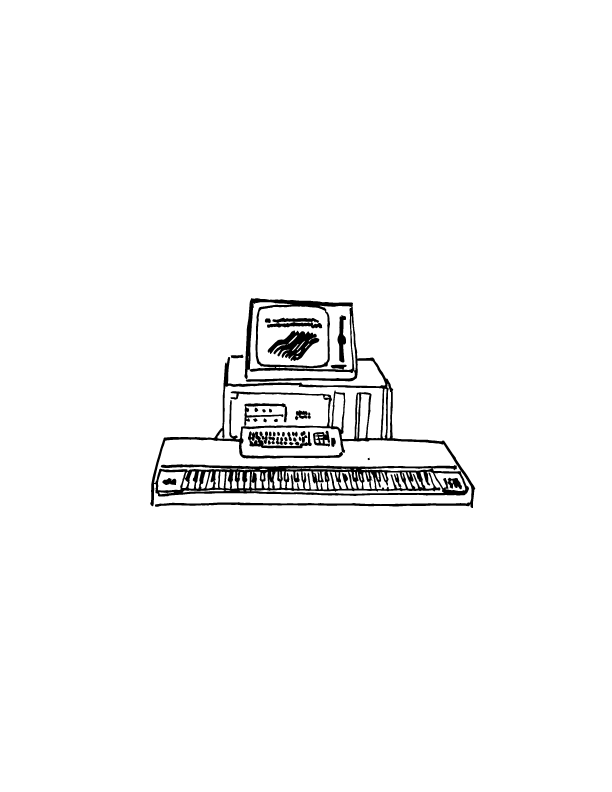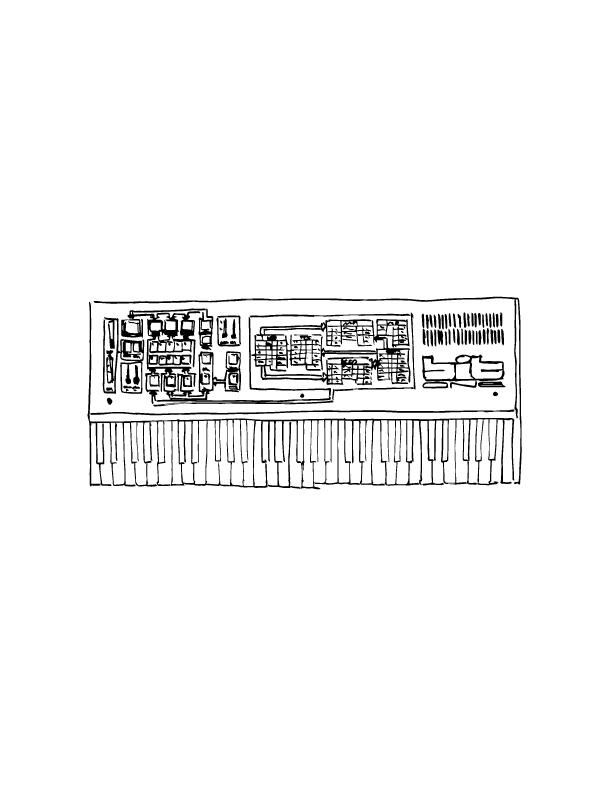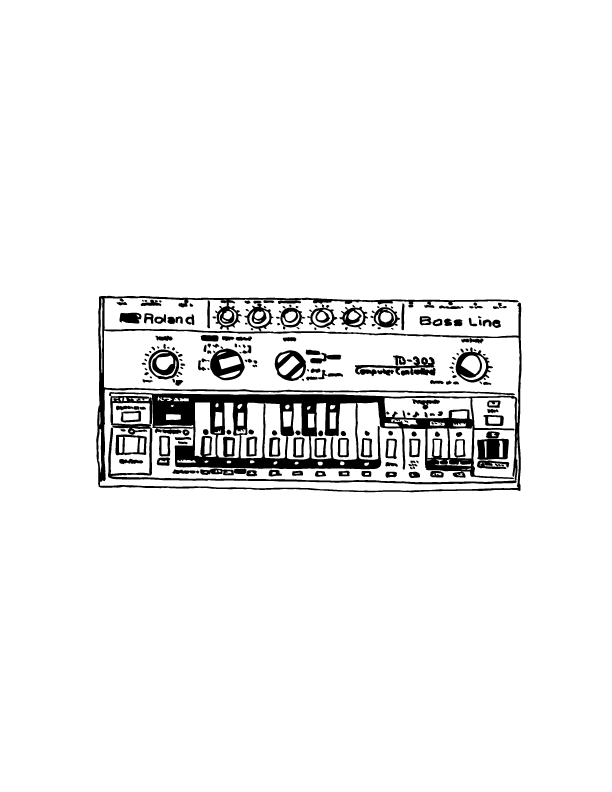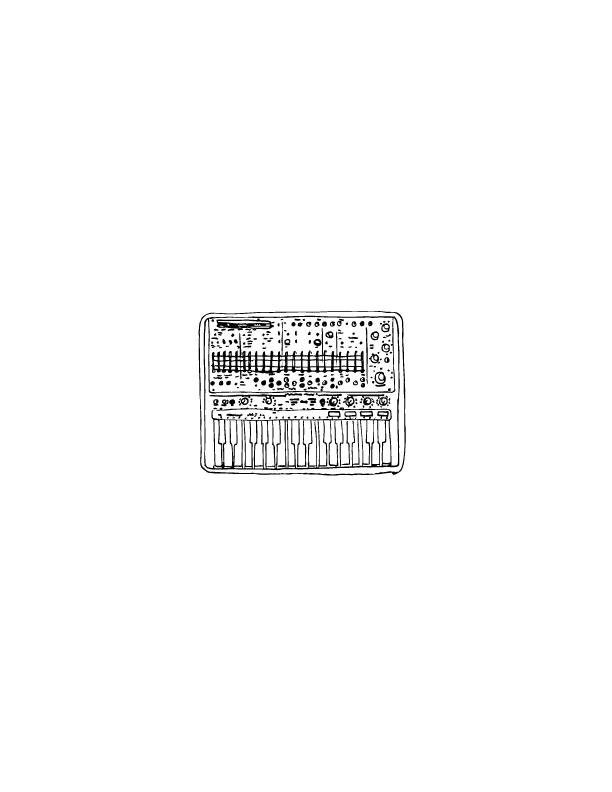LIVE NOW! RUNS MONDAY TO FRIDAY THIS WEEK!
VOTE HERE: https://twitter.com/weare1of100
results from round 1 (monday)








Welcome to the first World Cup of Vintage Synthesizers!
In collaboration with the fantastic We Are 1 of 100, we are running the first ever World cup of Synths. The eight synths that make it through to the quarter finals will be used for a glorious We Are 1 of 100 T-shirt and anyone who casts a vote in the polling will be entered into a competition to win one!
Voting will take place on the Twitter feed of WeAre1of100: https://twitter.com/weare1of100
There are 32 synths grouped into eight groups of four. The first round of voting will see the top two of each group go through to the next round. Those sixteen will face each other in the quarter finals, then four go through to the the semi’s. The finals will crown the Official Best Synth of All Time!
Thirty-two glorious vintage synths between 1964 - 2000 have been selected:
Group A: ARP Odyssey, Minimoog Model D, Ensoniq ESQ-1, Elka Synthex (Poll Here)
Group B: Yamaha DX7, OSCar, Roland Juno 106, Yamaha CS-80 (Poll Here)
Group C: ARP 2600, Roland Jupiter 8, Oberheim OB-Xa, Casio CZ-1 (Poll Here)
Group D: NED Synclavier II, Korg MS-20, Access Virus, EDP Wasp (Poll Here)
Group E: Roland D-50, Korg Wavestation, Sequential Circuits Prophet 5, Octave The Cat (Poll Here)
Group F: Roland SH-101, Korg M1, Korg Mono/Poly, ARP Quadra (Poll Here)
Group G: Novation Supernova, EMS VCS-3, Oberheim SEM, Moog Modular (Poll Here)
Group H: Fairlight CMI, Crumar Bit One, Roland TB-303, Buchla Music Easel (Poll Here)
There will of course be endless arguments about which were/weren’t included! And that’s what the comment section and Twitter is for…
Read on below for more details about each synth in the competition
GROUP A
ARP Odyssey (1972)
Analogue / Duophonic / 2 Oscillators
A relative simple, but powerful monosynth that could be used in duophonic mode. Used by many musicians over the years including Peter Powell for the iconic Dr Who theme tune in 1980.
Moog Minimoog Model D (1970)
Analogue / Mono / 3 VCOs
One of the most iconic synths ever made; offering the essence of Moog’s modular synths in a 'mini' hardwired form. Gary Numan cites hearing one at the Spaceward studio in the mid-1970s as being the moment that changed The Tubeway Army into a synthesizer focussed band. Another great example - Parliament, ‘Flashlight' (1978).
Ensoniq ESQ-1 (1986)
Sample & Synthesis / 8 note polyphony / 3 digital oscillators per voice
The ESQ-1 was the first fully-fledged workstation with a mutlitimbral sequencer and a choice of digital waveforms and samples which could then be processed with its analogue filters.
Elka Synthex (1981)
Analogue / 8 note polyphony / 2 DCOs per voice
One of the best polysynths of the early 1980s, the Synthex was a large and sophisticated synthesizer. It was used by Jean-Michel Jarre for the sound of his 'Laser Harp' (Third Rendez-Vous, 1986).
GROUP B
Yamaha DX7 (1983)
FM / 16 note polyphony / 6-operator
The FM synthesizer that changed the soundscape of the 1980s with its fresh digital sounds. Famous for its electric piano - Whitney Houston, ‘Saving All My Love For You’ (1985). Brian Eno was also a champion of the DX7.
OSCar (1983)
Analogue / Mono/Duo / 2 DCOs
After leaving EDP in 1982 Chris Huggett formed the Oxford Synthesizer Company with Paul Wiffen and produced the OSCar synthesizer. It’s uniquely rugged appearance was courtesy of Anthony Harrison-Griffin and is considered something of a quirky British classic.
Roland Juno 106 (1984)
Analogue / 6 note polyphony / 1 DCO per voice
Widely used affordable polysynth with legions of users who valued it's warm tones and 128 patch memory.
Yamaha CS-80 (1977)
Analogue / 8 note polyphony / 2 VCOs per voice
The classic polyphonic synth with polyphonic aftertouch, gorgeous tones and smooth filters. It's synonymous now with Vangelis and his soundtrack for ‘Bladerunner' (1982). The only drawback was the cost - and the fact it weighed 100kg.
GROUP C
ARP 2600 (1971)
Analogue / Monophonic / 3 oscillators
Contributing to ARP's dominence of the 1970s synth market, the Model 2600 was a powerful synthesizer that came with a built-in reverb and sequencer. Was the 'voice' of R2D2 as performed by sound designer Ben Burtt.
Roland Jupiter 8 (1981)
Analogue / 8 note polyphony / 2 VCOs per voice
One of the classic polysynths of the analogue era and still much sought after today for its rich analogue tones and playability. Queen, 'Radio Ga Ga' (bassline, pads)
Oberheim OB-Xa (1981)
Analogue / 8 note polyphony / 2 VCOs per voice
Oberheim's OB-series of synthesizers were famed for the quality of their brass style sounds and were typical of the 'American' sound of synthesizers at the time. Van Halen, ‘Jump' (1983) and Depeche Mode, Love In Itself' (1983) (chords). Prince was a fan of the first OB-X.
Casio CZ-1 (1986)
Phase Distortion / 16 note polyphony / 2 DOs per voice
The CZ-1 was the culmination of Casio's phase distortion synths. Phase distortion is similar to FM in that two or more audio signals are able to modulate themselves to create harmonic complexity. Whilst never quite matching the success of the DX7 or D-50, the CZ-1 was a very capable synth that had its adherents.
GROUP D
NED Synclavier II (1982)
16-bit / sample rates up to 100kHz / 32Mb memory expandable to 768Mb
The original Synclavier was an additive synthesizer, but the second version added the ability to sample, and ranks alongside the Fairlight CMI as one of the earliest, significant breakthroughs in sampling technology.
Korg MS-20 (1978)
Analogue / Mono / 2 VCOs
Korg's classic monosynth of the late 70's. Built in a semi-modular format which enabled a wide variety of patches, an audio-in and a very distinctive filter, it's best known for Daft Punk's 'Da Funk' lead sound and the bassline on Flat Eric's 'Flat Beat'.
Access Virus (1997)
Virtual Analogue / 12 note polyphony / 2 oscillators + sub per voice
One of the first wave of virtual modelling synths, it offered 12 note polyphony and a fresh range of sounds that could be authentically analogue or growlingly digital and distorted. Was taken up enthusiastically by the dance music fraternity of the time.
EDP Wasp (1978)
Analogue / Mono / 2 DCOs
A typically quirky British synth of the late 1970s. All of EDP's synths and sequencers were named after insects, and included the Gnat, Spider and Caterpillar. The original Wasp had membrane keys, but was famed for its ripping distorted filter sounds. It was designed by Chris Huggett who also designed the OSCar and the Novation Bass Station.
GROUP E
Roland D-50 (1987)
Linear Arithmetic (Sample & Synthesis) / 16 note polyphony / 4 partials per voice
Roland nails the ROMpler. Heard everywhere in the late '80s. Used by such diverse artists as Enya, ‘Orinocho Flow’ ('pizzagogo') and Miles Davis, 'Cantembe' ('DigitalNativeDance').
Korg Wavestation
Vector Synthesis and Wave Sequencing / 32 note polyphony / 4 DOs per voice
Building on the innovation of wave sequencing first introduced by Dave Smith on the Sequential Circuit Prophet VS, the Wavestation brought a whole new approach to the sequencing and dynamic control of the digital waves that are the source of it's patches.
Sequential Circuits Prophet 5 (1978)
Analogue / 5 note polyphony / 2 VCOs per voice
The first polyphonic synth with full patch memory, an incredible sound, and relatively affordable for the time. It's great hard-sync sound can be heard on the The Cars, 'Let's Go' (1979).
Octave The Cat (1976)
Analogue / Mono/Duo / 2 VCOs
Octave were nearly sued by ARP for cloning their designs. ARP in their turn, were sued by Moog for cloning their filters. The Cat Series Revision Model (SRM) was designed to avoid further trouble. Nonetheless, The Cat found a niche for itself as a quirky, but versatile monosynth.
GROUP F
Roland SH-101 (1982)
Analogue / Mono / 2 VCOs + sub
A relatively simple, but great sounding and influential monosynth of the 1980s. Put to great use on the track 'Voodoo Ray' by A Guy Called Gerald (1988).
Korg M1 (1988)
Sample & Synthesis / 16 note polyphony / 2 DOs per voice
One of the best selling synths of all time, building on the D-50's use of 'sample and synthesis' - high quality samples which could be combined for realistic acoustic instrument emulations or shimmering digital tones.. The famous organ sound can be heard prominently on dance tracks like Robin S, ‘Show Me Love’ (1993) and Crystal Waters, ‘Gypsy Woman’ (1991).
Korg Mono/Poly (1981)
Analogue / Mono/Poly / 4 VCOs
The Mono/Poly has latterly achieved classic status thanks to it's four VCOs which can be used for four note polyphony - or for one fat unison lead or bassline.
ARP Quadra (1978)
Analogue / Bass Synth, Lead Synth, Poly Synth & String Synth
A powerful and popular synth with four different sections giving a high degree of flexibility and a wide range of sounds, including full polyphony in the poly & string synth sections. Used by New Order.
GROUP G
Novation Supernova (1998)
Virtual Analogue / 16 note polyphony / 3 modelling oscillators per voice
One of the first generation of analogue modelling synthesizers of the late 1990s; offering excellent polyphony with rich analogue tones and digital capabilities.
EMS VCS 3 (1969)
Analogue / Mono / 3 VCOs
Released a year before the Minimoog, it predates the miniturisation of modular synthesizers into a portable, but powerful unit. EMS' 'Voltage Controlled Studio, attempt #3’ was used widely, including in the BBC Radiophonic Workshop and by Brian Eno on Roxy Music's 'Virginia Plain'.
Oberheim SEM (1974)
Analogue / Mono / 2 VCOs
The first synthesizer from Oberheim featured a multi-mode filter than could be used in low/hi or notch modes to complement any existing synthesizer the user might have, which was likely to just have low pass filter.. Multiple SEMs were combined to make increasingly unwiedly and unreliable polysynths - the Two Voice, Four Voice and, amazingly, the dual manual Eight Voice.
Moog Modular (900 series) (1964 - 1970)
Analogue / Modular / 3-7 Oscillators
Between 1964 and 1970 Moog Instruments made a series of modular synthesizers using the 900 series of oscillators, filters, LFOs and more. These had a profound effect on the development of electronic music and the use of synthesizers in popular music, starting with Wendy Carlos' 'Switched on Bach' (1968).
GROUP H
Fairlight CMI (1979)
Sampler / 8-bit / 0.5s sample time at 24Khz / 8 note polyphony
One of the earliest sampling systems, the Fairlight Computer Music Instrument (CMI) cost £12,000 at launch (~£60,000 in 2021). The brainchild of Peter Vogel and Kim Ryrie, it was championed by Peter Gabriel and used by many artists such as Kate Bush, Trevor Horn and Jean-Michel Jarre. Named for the Fairlight hydrofoil that ran in Sydney Harbour, Australia. Was one of the machines that helped kickstart the sampling revolution which would transform the musical landscape of the 1980s and beyond.
Crumar Bit One (1984)
Analogue / 6 note polyphony / 2 DCOs per voice
Crumar were an Italian brand who were most active in the 1970s and 1980s; the Bit brand targetted the more professional user. The Bit One was a polyphonic synth in the vein of the Roland Juno 106 but also had a velocity sensitive keyboard. 808 State owned a Bit One.
Roland TB-303 (1982)
Analogue / Mono / 1 VCO
The machine that kick-started the acid house revolution in 1986 with Phuture's, 'Acid Tracks’, debuted by DJ Ron Hardy at The Music Box, Chicago. Not many one-oscillator monosynths with only two waveforms have single handedly formed the back-bone of dance music for over thirty years…
Buchla Music Easel
FM/Analogue/Additive / Duophonic / 2 Oscillators
Unlike his contemporaries, Don Buchla believed that a piano style keyboard and simple subtractive analogue synthesis was a limiting approach to electronic music. He favoured oscillators and processes that favoured a wider range of harmonic complexity and encouraged users away from thinking in conventional harmonic and melodic terms. Very much the 'west coast' avant-garde approach to music philosophy.
VOTE NOW!
